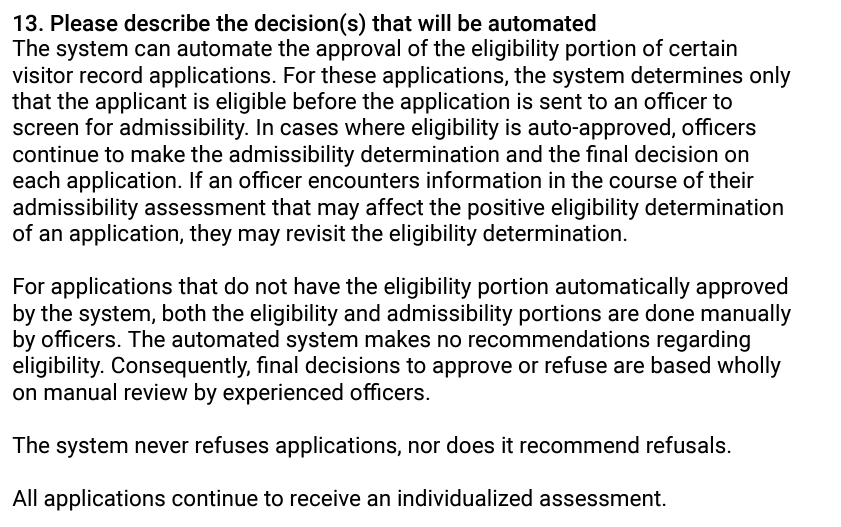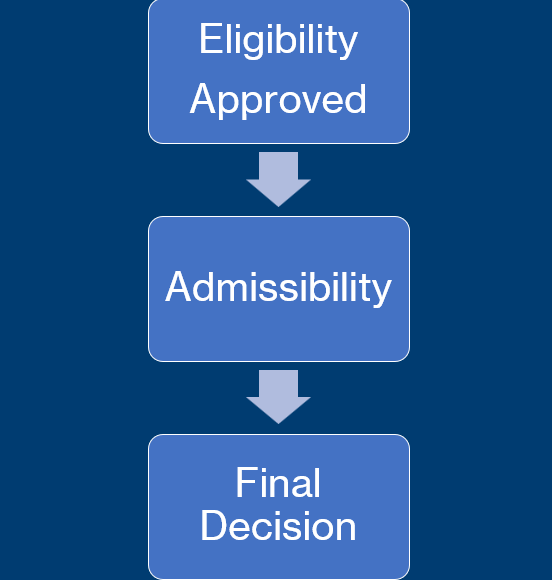
The Algorithmic Impact Assessment snapshot below explains how the Advanced Analytics model processes visitor record applications. Advanced Analytics Triage of Visitor Record Applications is one of IRCC’s projects in using advanced analytics. This project info is available for download here.


As it indicates, IRCC’s advanced analytics system can automate the approval of the eligibility portion of certain visitor record applications. For these applications, the system determines only that the applicant is eligible before the application is sent to an officer to screen for admissibility. In cases where eligibility is auto-approved, officers continue to make the admissibility determination and the final decision on each application. If an officer encounters information in the course of their admissibility assessment that may affect the positive eligibility determination of an application, they may revisit the eligibility determination.

Note that for applications that do not have the eligibility portion automatically approved by the system, both the eligibility and admissibility portions are done manually by officers. The automated system makes no recommendations regarding eligibility. Consequently, final decisions to approve or refuse are based wholly on manual review by experienced officers.
In addition, an IRCC internal memo below describes how the advanced analytics model triages visitor record applications. This one has more details than the other.

This internal memo for IRCC staff has explained that there is a triage system for VR applications based on risk and complexity. Tier 1 is where VR applications with the lowest risk/complexity will be assessed by the model on the eligibility portion. Applications triaged to Tier 2 will be manually processed and decided by officers, for both eligibility and admissibility.



